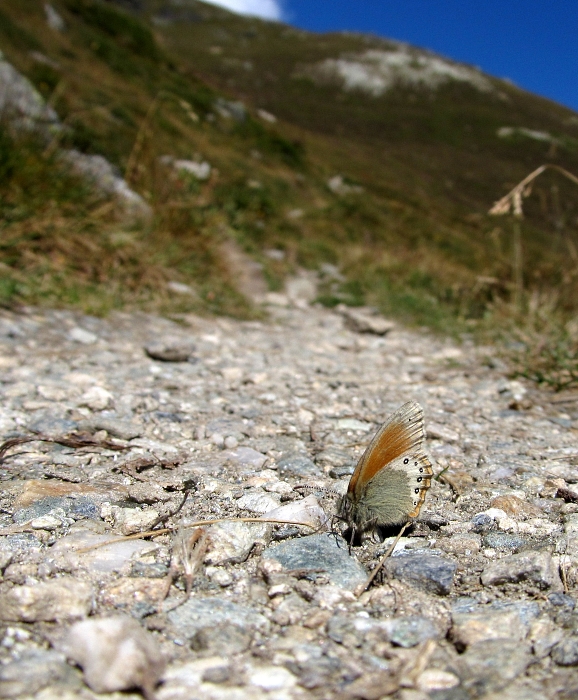
Switzerland, July 2015
Coenonympha gardetta
Refresh page if pictures don't load fully:









Switzerland, long ago ...

Distribution
The statuses of alpine heath (Coenonympha gardetta),
Darwin's heath (Coenonympha
darwiniana) and the Piedmont heath (Coenonympha macromma)
are disputed. Most authors regard them all as subspecies of the first
but some - e.g. Leraut - treat them as separate species. Alpine heath
and Darwin's heath freely interbreed where they meet, and in Valais, in
Switzerland, intermediate forms are common - indeed, the norm towards
the eastern end of the Rhône Valley. Of the three, the alpine heath
flies the highest and probably represents the original departure from
pearly heath - the lowland species from which they all probably derive.
It is also the most widespread and is common throughout the alpine
region.
A pure alpine heath has a
grey underside
hindwing with ermine trimmings - a broad, white band containing
white-pupilled, black spots. The spots are not obviously ringed in
white or yellow, though when the band is narrow and they edge out of
it, they can be seen to have a white surround. In contrast, pure
Darwin's heath has obvious yellow rings, bordered dark. In alpine
heath, the uppermost spot is within the white band, towards the
outside, while in Darwin's heath it is on the inner edge of the band,
or even partly in the brown area inside, as in pearly heath. The
underside of the forewing is typically greyish in alpine heath, though
some individuals, especially hybrids with Darwin's heath, may be very
orange. The Piedmont heath is similar to Darwin's heath, and similarly
distinguished from the alpine heath. It flies in Piedmont and the alps
of south-east France.
The caterpillars feed on various grasses and it is this stage
that
hibernates. The adults fly in a single generation from June (or July at
higher altitudes) until September.